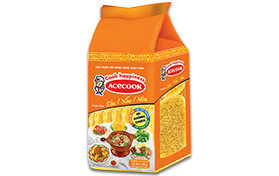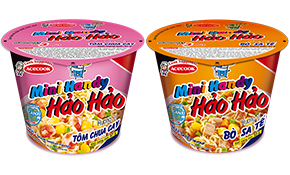When it comes to the cuisine of Sai Gon, it is difficult to separate the rice flour culture of Vietnamese peole such as rice, porridge, rice noodles, pho, and the presence of numerous noodles dishes and Hu Tieu noodles of Chinese People in Cho Lon market.
There are variety of noodles, from wonton, springy stir-fried noodles with sea cucumbers at luxurious restaurants such as Soai Kinh Lam, My Canh, and Chi Tai, to stewed duck noodles scarttered on the sidewalk, or Hu Tieu noodles at midnight, etc.
I have some foreign friends who complain after a drink that “When we first came here, the interpreter took us to have pho, spring rolls, and introduced that they are the elite food of the country. They were very delicious. We ate these foods in order to have answer for the questions of Vietnamese on our most favorite food. However, we were invited to eat pho and spring rolls everyday, and had to eat them in every travel tour. Even our local partners invited us to have pho and spring rolls. Then I asked them “How can you eat these too dishes everyday without getting bored?”.
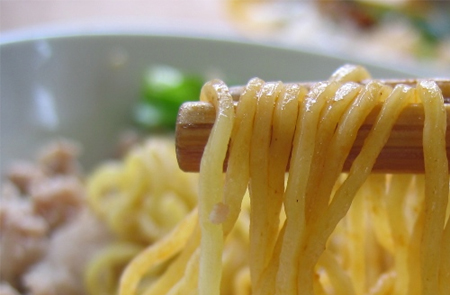
Instant noodles of Sai Gon people are as sweet as Vong Co song, as strong as fish sauce and dried shrimp, and fit the taste of the Southern cusine while carrying the taste of Chinese noodles in Cho Lon market (photo: Vietq)
I honestly admitted to my wondering friends that Sai Gon people ate these dishes on a few occasions when we were lazy to cook, the last meal of the year, or Tet and death anniversaries. Therefore, it was not sure to say whether we would miss them when we travel far away or not.
What makes people remember for a long time tends to be the things that are thought to be the most overabundant.
It is a glass of iced tea after a coffee drink, whether in a luxurious café or small street shop.
It is a plate of crushed rice that reminds us of the aromatic smoke covering the small alleys in the early morning.
It is a bowl of dried noodles of a street vendor at night where the spice of the dish is also the bamboo sound made by the boy accompanying the vendor’s cart.
These dishes are rarely introduced to visitors, and hardly get into luxurious hotels with US dollar price tag or called speciality.
There is no tourguide inviting tourists to eat instant noodles and proudly tells the story of this popular dish.
It is just simply a packet of local instant noodles which costs only some thousand dongs which is the taste of Sai Gon and makes people remember it.
Instant noodles party
Noodles are called the “specialities” of Sai Gon, but they are not invented by Sai Gon people. The inventor of the typical food of industrial life is a Japanese – Momofuku Ando. If Kimono was transformed from the most sophisticated national costume into the simplest one to be disseminated over the world by Japanese people, Momofuku Ando also did the same thing to ramen to make a food that caused a wave in the whole Asia with various national versions. If instant ramen of Japanese people has thick string and pungent flavor of mustard, udon noodle of Korean people has fresh, springy, and big strings like “banh canh”, tom yum noodle of Thai people has the special sour and spicy flavors, then instant noodle of Sai Gon people has the tender taste like Vong Co song, fish sauce, and dried shrimp, matches the taste of Southern dishes, and carries the smell of Tau noodles of Cho Lon market.

When it comes to the cuisine of Sai Gon, it is difficult to separate the rice flour culture of Vietnamese peole such as rice, porridge, rice noodles, pho, and the presence of numerous noodle dishes and Hu Tieu noodles of Chinese People in Cho Lon market. There are variety of noodles, from wonton, springy stir-fried noodles with sea cucumbers at luxurious restaurants such as Soai Kinh Lam, My Canh, and Chi Tai, to stewed duck noodles scarttered on the sidewalk, or Hu Tieu noodles at midnight with the sounds of bamboo bell, in an ordinal neighborhood of rental houses. Regardless of the social status and price, noodles have become indispensable parts of Sai Gon’s cusine. However, with the emergence of instant noodles, the restaurant’s dishes have turned into quick solution for every family missing the meal or tired of rice.
All you have to do is adding boiled water, close the lid and wait for it to be cooked, then enjoy the dish. Even the men who are clumsy at cooking can manage to make a bowl of instant noodles, so instant noodles become the key food of single men. Each family think of their own method to cook instant noodles. Just breaking the egg, extracting the yolk to the bowl of noodles, then the kids will have a quick and hygiene breakfast before going to school. More sophisticatedly, you can add spinach, beef balls, chilli sauce, and pork bologna to make a restaurant-style dish. Because of the strong taste with delicious seasoning sachets, instant noodles are cooked as soup to be served with rice by many families. At parties, instant noodles are quickly boiled, stir-fried with anything left like seafood, pork liver or heart, broccoli, etc., sprinkled with pepper and parsley to make a quick, delicious, and unique dish.

Kids who always eat on the sly think of eating uncooked noodles. The crushed noodles broken from the noodle blocks during the production are used to make the cheap snack for kids which is more delicious and crispy than a block of noodle. They just pick up a pinch of crushed instant noodles, sprinkle a little salt and spices, and then chew the cripsy noodles. Once eating this cheap and interesting snack, they fall in love with it. However, it makes them so thirsty after eating that they all have to drink up a bottle of water and become full. The drinkers also learn this way of eating instant noodles. Therefore, instant noodles become the cheapest and easiest-to-find snack in the world and uniquely suitable with drinkers. I always remember the rainy season when all Sai Gon people stayed up lat at night to watch soccer, instant noodles were sold out in the market. The little girls who did not have any idea of soccer also felt eager waiting until night for the midnight supper. It rained dogs and cats outside and the kids could not cycle to buy bread with pork, the whole family gathered by the bowls of noodles with warm, aromatic smell of pepper, spring onions, and fresh chili pepper garnished in fish sauce. Sometimes with some bottles of xa xi Chuong Duong, Sai Gon beer, they could create a cheerful party like a gala dinner. Therefore, as a subconscious reflex action and a household skill of a woman, whenever it is going to rain, there is some big news, or on holidays, the first action of a woman is running to the market or convenient stores to buy instant noodles to fill the cabinets. Instant noodles have become the useful reserved food. During business trips abroad with the worry of not becoming familiar with the food of a foreign country, everyone has some packets of instant noodles or more convenient bowl noodles with chopsticks and spoon insides. You just need to find a faucet (which always is clean in some foreign countries), select hot water to cook noodles, then there will be no worries about wasting money, strange food, or stomachache.
When I was abroad and got used to foreign food, the instant udon in a stone bowl reminded me of the charming salty instant noodles at home. This made me shed tears and felt sorry to myself who was a country-styled person listening to chamber music and symphonies but badly missing a tryly tender Vong Co song. The development of Thien Huong If Momofuku is considered as the “noodles papa” in the world, one of the first entrepreneurs to make the legendary Vietnamese instant noodles is Trieu Chau Tran Thanh, the owner of Thien Huong brand. After a long period when the Southern market of Vietnam was dominated by luxurious goods and imported food, similar to the proud surge of entrepreneur Truong Van Ben, the woner of Vietnamese soap brand Co Ba, in 1960, master Tran Thanh suddenly dislodged the monolatry position of the top Asian nonosodium glutamate manufacturers such as Ajinomoto (Japan) and Vedan (Taiwan) with Huong To seasoning powder.
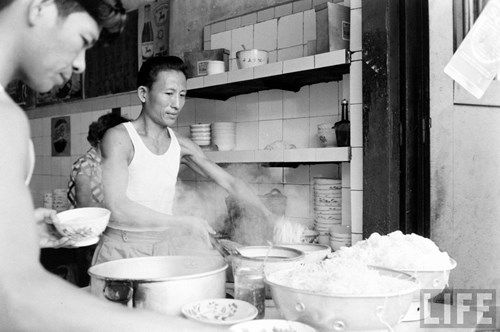
Image: A noodle restaurant in Cho Lon 1961. (Photo: Life)
After the absolute win of Vi Huong To, another impressive hit of Thien Huong in 1972 was the launch of Vi Huong instant noodle with the two-shrimp label. At the same time, Binh Tay instant noodle company also offered their product named Hai Cua Xanh and Vifon launched their own instant noodle product with the image of two shrimps. Due to the lack of pattern protection, Hai Con Tom brand dominated the market and overwhelmed Hai Cua Xanh brand of Binh Tay. After that, there was Colusa brand (1983), a state-owned company which was developed on the basis of another Cho Lon noodle factory also used the two-shrimp name, followed by Miliket. Despite the late birth (in 1989), Miliket was the name which made the renaissance for this ordinal and friendly food. Gradually, the common name for instant noodles was “mi tom” (shrimp noodle), similar to the way Sai Gon people called motorbikes Honda. Throwing back, if Binh Tay Company had gained success in the market, people would have said: “Hey kids, go to the store and buy some packs of ‘mi cua’ (crab noodles) to watch soccer at night”. It is interesting that there is a long story of the up-and-down life behind a familiar dialect. Later, because more flavors of instant noodles were introduced, people less called instant noodle “mi tom”, but called it “mi an lien”. In a certain period of time, “mi an lien” was considered as an adjective when the trend of “mi an lien” films emerged. This term referred to the films which were made with low cost, in a very short time and easy manner like cooking instant noodles.
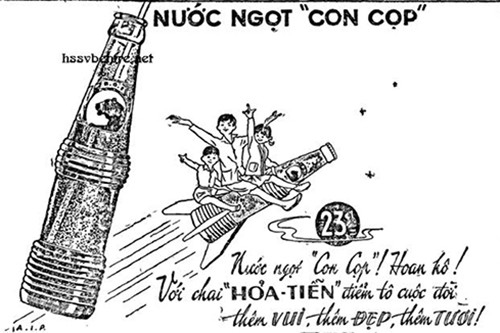
At that time, instant noodles block which were wrapped in brownish yellow “kraft” paper and printed with red characters immediately made a visual subconscious of this famous dish. “Kraft” paper was the recycled paper which was tough and waterproof. It was called “cement paper” by Sai Gon people because they were used to make cement bags. However, when it came to instant noodles, only the warm brownish yellow paper could be the guarantee for the fineness of “paper-wrapped instant noodles” that the more sophisticated noodles later wrapped in plastic bags could not be compared with it. Back to the story of master Trieu Chau Tran Thanh, the father of Vi Huong To and Vi Huong instant noodles, later he flourished with various spices, and local food such as soy sauce, vegetarian noodles, etc. His private life was also a long story with a famous Taipei celebrity Thang Lan Hoa, a Singaporean lady, a dancer at Maxim’s dance club, and various concubines which used to be the origins of sensational rumors among the powerful tycoons of Sai Gon. Some articles later based on the sufficiency of life to explain for the bankruptcy of Viet Huong brand. It is necessary to grasp the chance to return the objectivity of the history because the love affairs with beautiful ladies are common and a businessman is not easy become exhausted by a few diamond rings or Rolex watches to show off with the beauty. After April of 1975, the capitalist Tran Thanh was rehabilitated. Because he had used to be a big entrepreneur, so he was in charge of raising pigs for the farms. All of his properties were confiscated. Tran Thanh, the legend entrepreneur of Sai Gon – Cho Lon went overseas and left behind his deserted Thien Huong.
The new legend Miliket
Capitalists went bankruptcy or left to other countries. The sources of material supply were suspended. Machines were broken and lost. Factories operated perfunctory until 1981. All these signals predicted that the economy and production reached the bottom of exhaustion, the risks starvation was certain. At that time, one of the most notable names of the housewives in the city was Ba Thi of the City Food Trading Company who pioneered to break the trading barriers for goods exchange. As an obvious consequence, instant noodles manufacturing industry was revitalized and Colusa brand was launched, followed by Miliket. Experts and engineers studied and analyzed the original product samples to recover the taste of the instant noodles which had used to be the famous food in the Southern market. The “cement paper” returned to the race of food market. Miliket launched red plastic packs of instant noodles which could recover about 90 percent of the previous original Sai Gon instant noodles. Along with the development of condiments were the seasoning sachets and satay oil instead of the previous industrial onion oil. Miliket instant noodles with two shrimp image officially occupied the entire market of instant noodle and became the childhood subconscious flavor of many generations.
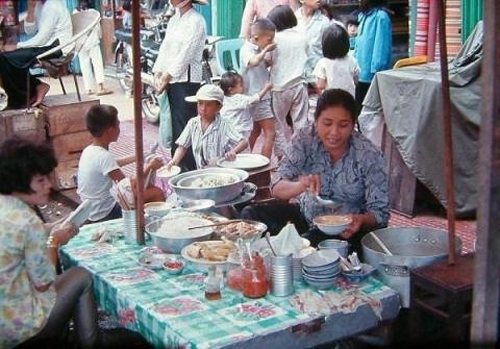 Only with one or two tables, small food stalls selling noodles in the market have become popular in Sai Gon markets. (Photo: TL)
Only with one or two tables, small food stalls selling noodles in the market have become popular in Sai Gon markets. (Photo: TL)
In the 1990s, another product which came to the subconscious flavor of the instant noodle lovers was chicken noodles with fancy glossy plastic packets like purple chicken noodles of Thailand. Vifon came later, but it built a completely new force. After the glorious Renaissance, the war of instant noodles started and lasted until today.
Nowadays, the big foreign firms also enter the competition, but there are almost no cuisine aspects that the instant noodles firms ignore, from spicy and sour, hotpot flavors, vegetarian noodles, to pho, glass noodles, and instant vermicelli.
The advertisement game is not less interesting. People threaten each other by hundreds of diseases and introduce instant noodles that can prevent… hundreds of diseases. Models wearing bikinis are used for advertisement of love noodles. Housewives who can make instant noodles to serve their mother-in-law are praised as good wives. Some office husbands wearing neat shirts remember their wives due to the taste of instant noodles. Some couples fighting each other for the final strings of noodles on the bottom of the bowls, etc. Every advertisement is jubilant. The image of a modern family happily gathering together looks like life insurance advertisement that the daring ideas make people laugh, although the level of investment and profession of such advertising campaign is even more sophisticated than “instant noodles” films in the past.
In addition, the new technology also introduces the instant noodles that are safe for the health such as green noodles made from spinach for vegetarian, non-fried noodles to prevent cancer, noodles made from potato powder for… beauty care, etc. The packing is also elegant with the images of the ingredients as if the whole elite culinary world is captured into one pack of instant noodle. The noodle string is now white, puffy, and more even than it used to be and looks like Japanese and Korean noodles. The noodle strings fried to reach brownish yellow color are just the subconscious of the conservative customers. A couple years ago, as a move of recalling the past, people looked for Miliket noodles, Vi Huong noodles wrapped in “kraft” paper. As a result, there is a dedicated corner in every supermarket for the simple instant noodles with the immortal logo of two shrimps.

The carrying poles selling snacks in Sai Gon (Photo: TL)
Perhaps the echo of the fragrant, warm, and rustling package describes the real flavor of this friendly ordinal food insides. In the battle of color and flavors of instant noodles, the image of two shrimps of the original brand which used to be very famous reminds people of the dinners when the whole family gathers, the loneliness of student life eating alone in the rental room. Every Tet, they are the first sold out items in the supermarket.
Later on, every time I make instant noodles, I often add sliced spring onions and a piece of chili pepper, like the way my father made instant noodles for my breakfast before going to school.
Last time, I was angry at something and went out with friends overnight. In the following morning, I felt cold and hungry and afraid of being punished, I opened the door slightly, tiptoed to the kitchen and saw a bowl of instant noodles sprinkled with green onions and a piece of chili pepper in the way I like to eat.
I had never eaten a bowl of noodles that was saltier than that one.
After that, after each business trip, whenever my husband goes to pick me up at the airport and asks me what I want to eat, I only ask for a bowl of instant noodles made by him. It is enough for me to feel that I am already at home.
Going back to the story with my foreign friends, I stopped the long story about the master, the complication of that time, the sweetness and salty of the single life, or family’s parties. “If you want to enjoy the peaceful daily taste, or the taste of rainy seasons, the major events of life, or the desire of people living away from home, regardless of the way it is cooked, it is neither a luxurious nor sophisticated dish but a bowl of instant noodles costing only some thousands VND, with some condiments left over in the fridge, some bottles of Xa Xi Ong Cop containing the taste of Cho Lon market which is enough for a long talk in a very local style. Each one has a different memory about the story of instant noodles, which is the condiment to make the dish more delicious.”
There are also a lot of memories with Xa Xi Con Cop which combines with instant noodles to make the local culinary culture. The story is long now, I would like to end it here and we will discuss other stories later.
According to Trac Thuy Mieu (Nguoidothi.vn)






